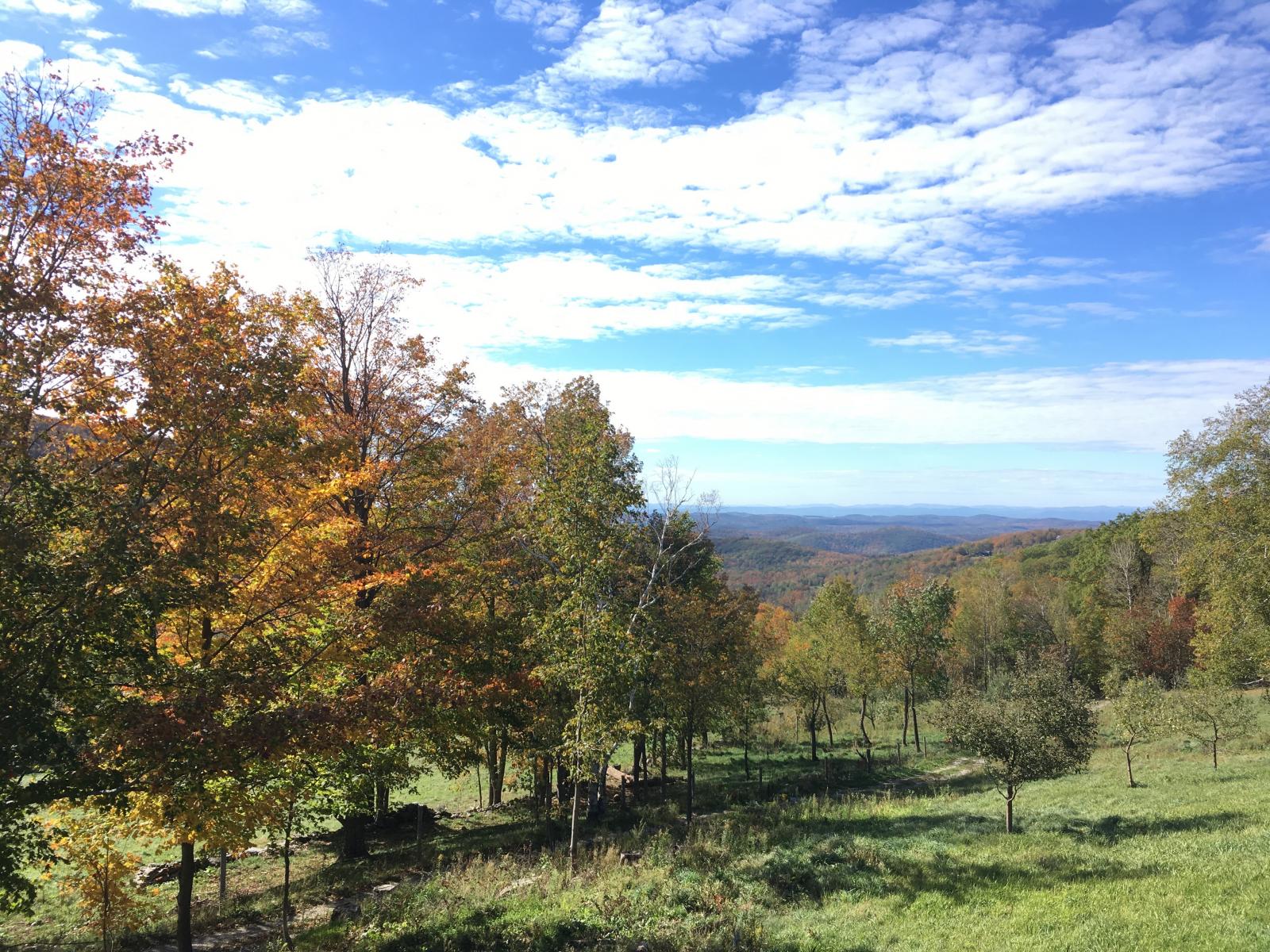A Land Ethic and the 30x30 Initiative
By Rob Terry, Executive Director, Merck Forest & Farmland Center
March 3, 2021

Merck Forest and Farmland Center’s (MFFC) 3,200-acre campus is nestled in the Taconic Mountains of Southwestern Vermont. In the midst of this predominantly forested landscape, MFFC operates a 60-acre upland farm. At the heart of the farm sits the Sap House, home base to the institution’s sugaring operation. From the Sap House deck, visitors enjoy an expansive view across the southern Adirondack’s and Hudson Highlands. On a clear day, it’s even possible to catch a glimpse north into the Adirondack Park’s high peaks. To the casual observer, the view rolls to the horizon like a sea of green, and it would be easy to see it all as one vast, untouched wilderness. However, despite a lack of visual cues, the viewshed consists of two distinctly different landscapes. To the north, the protected and largely unfragmented (uninterrupted by roads and/or development) forest of the Adirondack Park functions differently than the parcelized (sub-divided and often developed or on the cusp of development) and working (actively used for agricultural and/or silvicultural production) land to its south. For the scientists, land managers, conservationists, and philanthropists working hard to abate simultaneous global extinction and climate crises, this distinction is an important one.
On January 27, 2021, the United States committed to the ambitious goal, through executive order, of conserving 30% of the nation’s land and 30% of its coastal seas by 2030. At present, only 12% of the U.S.’s land is under sufficient protection to qualify for this designation (though the federal government has yet to share the exact criteria it will use to determine how land will qualify to be designated conserved through this initiative). Meaning that, in order to achieve this goal, the country must protect an additional 440 million acres in the next nine years—two times the total acreage of the state of Texas. For context, the United States consists of 2.3 billion acres of land in total. Of this, three percent (69 million acres) is considered urban. Add that to the 30% that is intended to be protected through the 30 by 30 initiative and you have accounted for 759,000,000 of those acres. This leaves approximately 1.5 billion acres of rural land that will not be targeted for protection under this initiative.

I wish our nation the best of luck in its ambitious drive to ensure that 30% of our land is conserved , receiving a level of protection similar to that northern end of the viewshed from the Sap House deck. The importance of this work cannot be understated. At the same time, I’m left pondering the vision for that which remains—those 760-million rural acres. Recognizing that nearly 800-million acres is a big bite to chew, I’m reminded of a bumper-sticker friendly adage that has held substantial sway in the environmental movement for some time: “think globally, act locally.” Yet in the midst of a global crisis, I am left wondering “what exactly is local?”
While not universally protected to the conservation standard required for inclusion in the 30 by 30 initiative, the MFFC viewshed is, in its entirety, a part of the Northern Appalachian/Acadian Ecoregion—the largest intact temperate mixed broadleaf forest in the world. The ecoregion is a habitat of global significance that includes the Taconic Mountains, the Adirondacks, almost all of Vermont, the northern half of New Hampshire, most of Maine, and much of Maritime Canada, still a bit of an intimidating scale to be prime for local action.
Thanks to the Vermont Conservation Design, a project led by the Agency of Natural Resources, it is easier than ever to drill down to the hyper local level in Vermont to identify high value landscape features that are critical for maintaining and enhancing ecological functionality. In doing this, a local feature immediately stands out.
Merck Forest, as it happens, is perched at the northern tip of a 42,000-acre intact forest block with a high-volume connectivity corridor linking it to the southern Green Mountains. Further investigation indicates that this block, and others in the nearby landscape, are becoming increasingly critical features for a variety of species as they migrate north due to pressure associated with rising temperatures. This forest block is developed on its perimeter (particularly at the base of its eastern escarpment) and parcelized throughout, making it difficult to imagine that it will be a prime candidate for conservation through an initiative such as 30 by 30. Nonetheless, it is essential.
Because it is essential, it must be protected. Because I find myself in a position to do something, I must act. In fact, I would argue that we all must find the lever that we can pull. Everything we have is of the land—much of it, here in the US, originates from the aforementioned 760-million rural acres that will be left unprotected by the 30 by 30 initiative. Urban or rural, rich or poor, engaged or unaware, our decisions determine the fate of this land. Some of us find ourselves in positions that elevate our voices, giving us influence. Others even have the privilege of making decisions that directly determine how some of these lands are managed. For most, our impact may not feel quite as immediate. Still, each of us, through our collective power, define what happens on the land. With every purchase, every tank of gas, and every vote, through our work and through our play, we shape these lands and lands like them around the world. The fate of working lands is market driven, but we are that market—through informed consumerism and conscious consumption, we can, and we must, shape a future that leaves our planet viable for life as we know it.